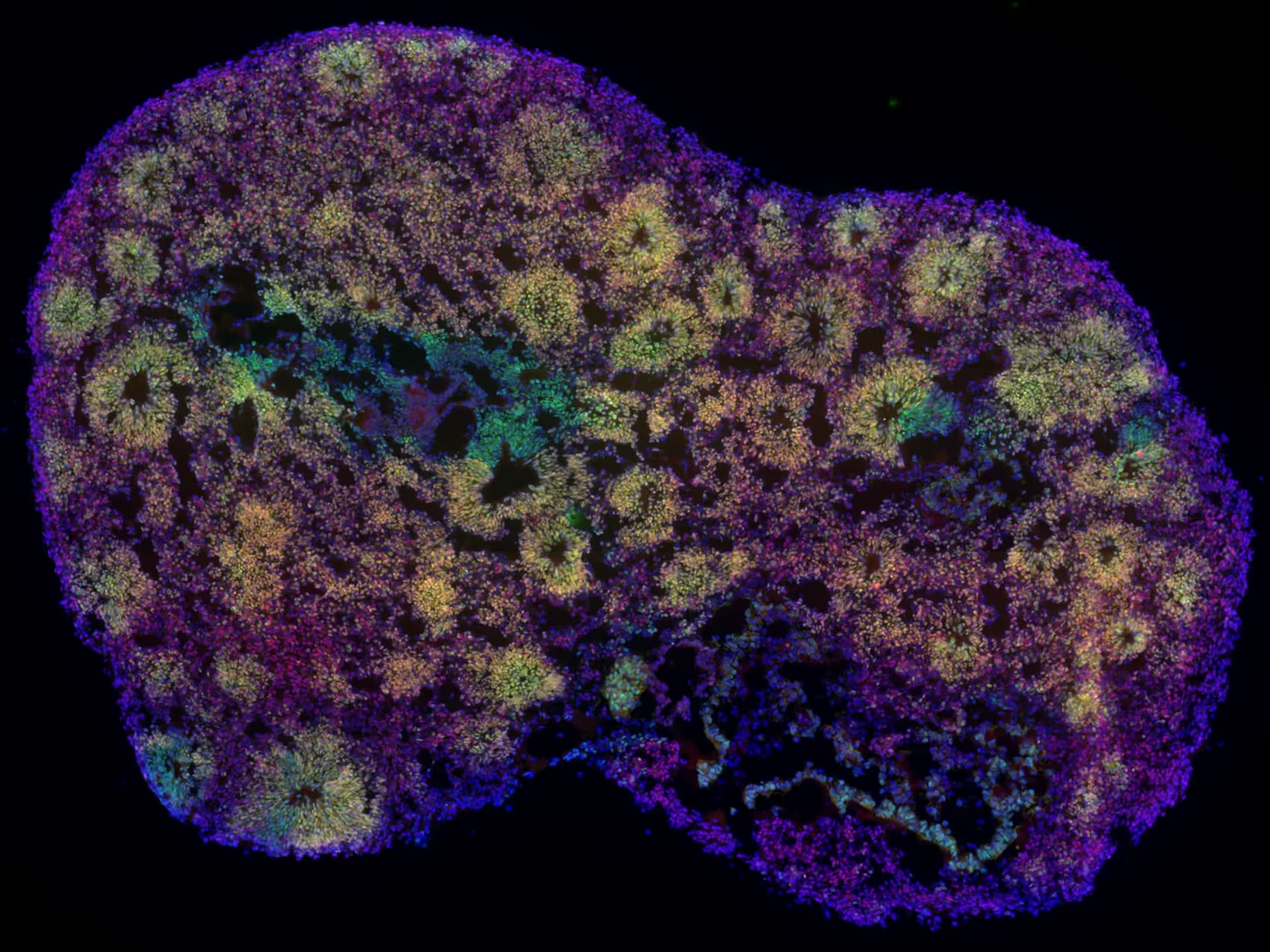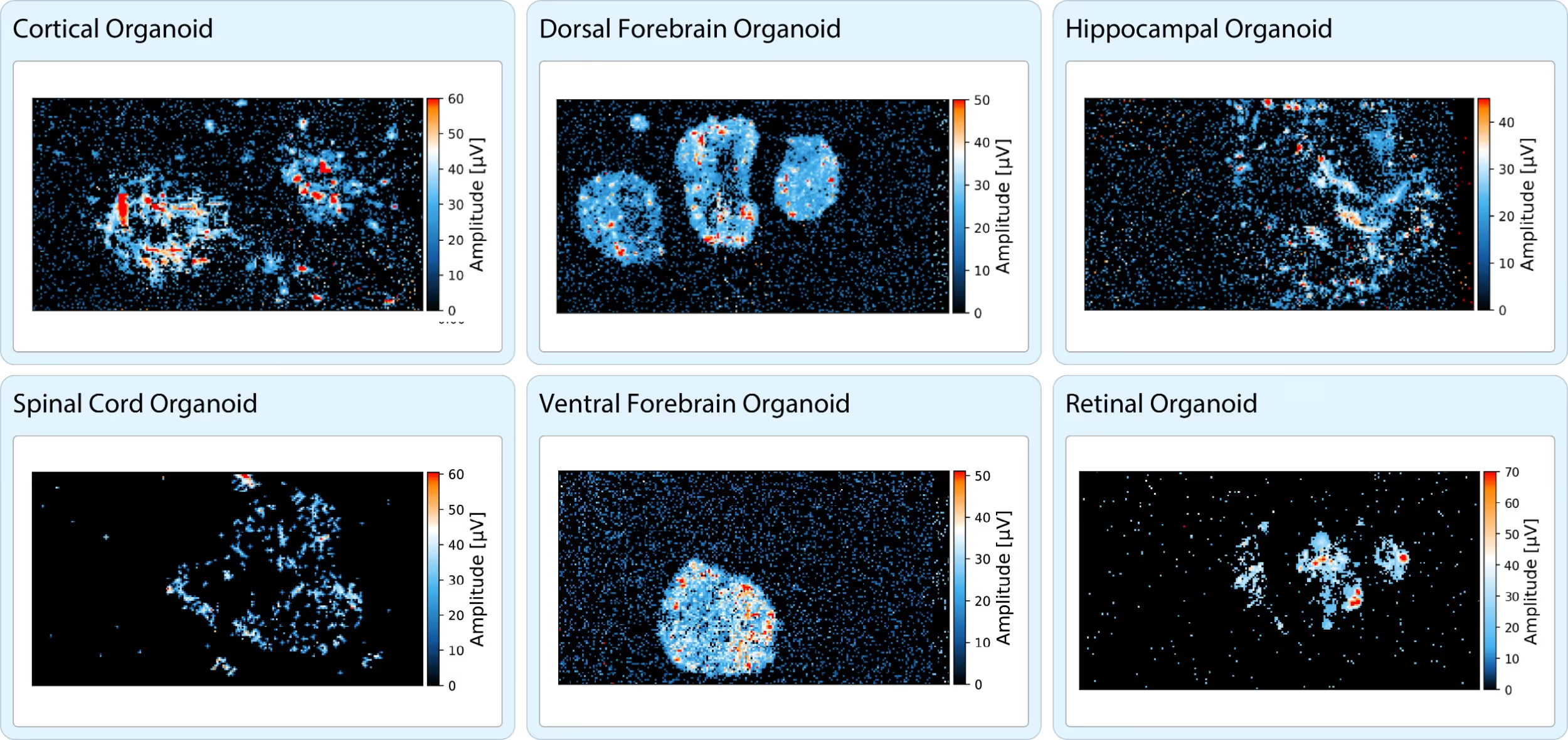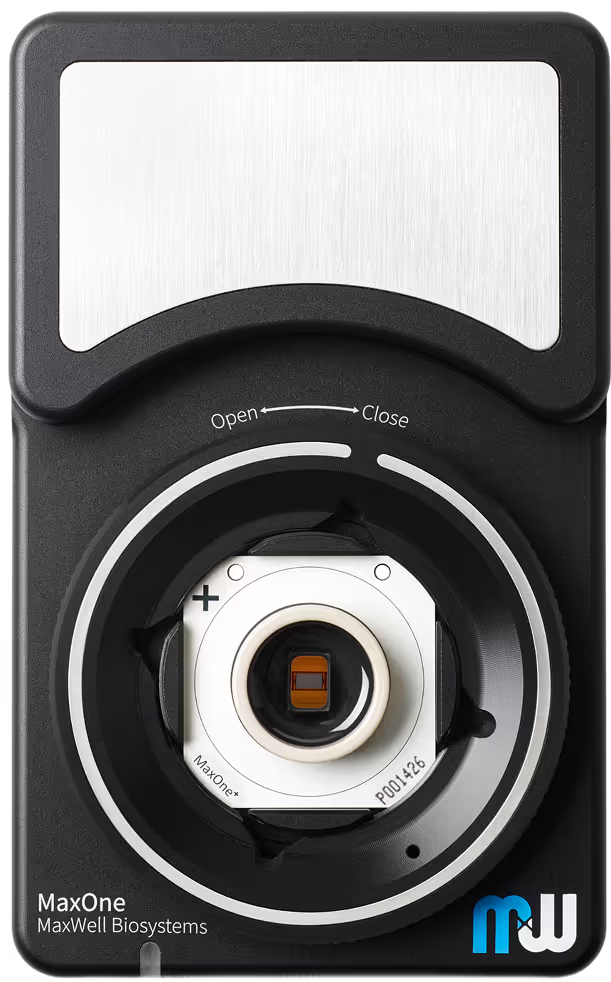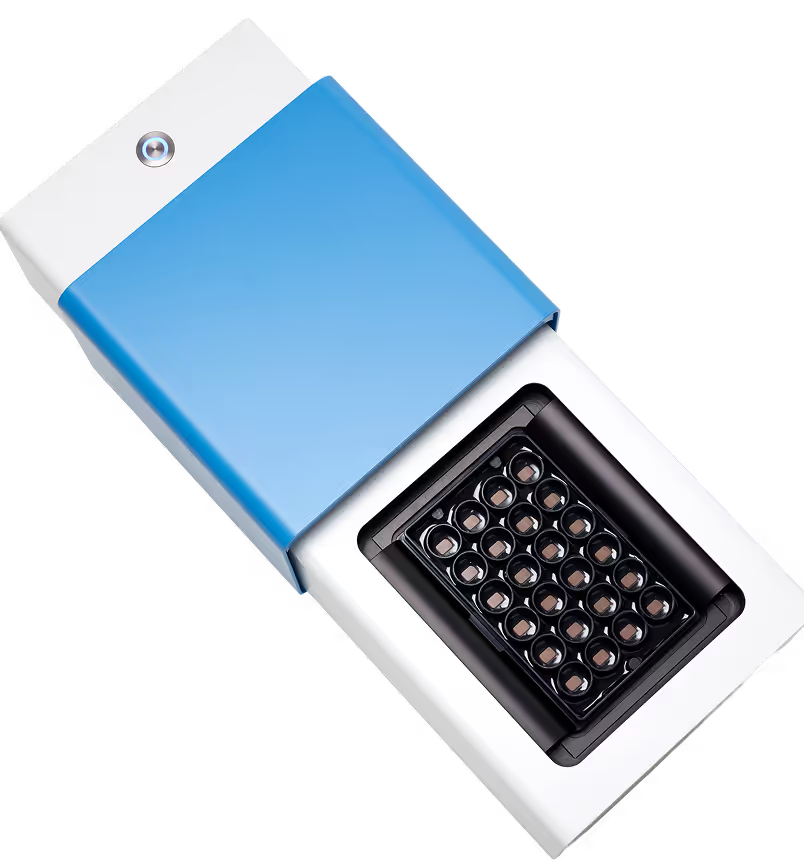
Organoids
Every Cell has a Story to Tell.
Let’s Discover Yours
Organoids are precious. They require expertise, months of effort, and significant recourses to develop. Often patient-derived and biologically complex, each one is an irreplaceable model of human neurodevelopment or disease. Their full value can only be realized with the right tools.
Our High-Density Microelectrode Array (HD-MEA) technology is designed to make every organoid count, enabling detailed functional characterization at single-cell and network levels even at early stages of development, with unmatched spatial and temporal resolution.

Uncover the full functional profile of every organoid
Your organoids are precious, make them count and unlock insights that optical imaging alone cannot provide. Reveal how neurons fire, connect, and develop, even at early stages, with functional insights captured at subcellular, single-cell, and network level by our HD-MEA technology.
Greater reproducibility with fewer samples
Minimize biological variability with reproducible, high-quality functional data across wells and timepoints. Our high electrode count ensures reliable, statistically robust results, even more relevant if organoid samples are limited.
Always at the right spot
Optimize recording quality through our flexible, high-density electrode configuration, and ensure you are capturing signals directly beneath active cells. Record high-quality data across your organoids without needing to have a perfect organoid placement every time.
Biologically relevant and non-invasive functional readouts
Capture the true activity of your organoids without compromising viability. Our system records from connected networks on the organoid surface, without invasive probes, providing biologically relevant signals that reflect how your model actually behaves.
Fit for a wide range of organoids
Organoids vary in protocol, structure, and handling, but our technology adapts. Whether you are performing acute or longitudinal recordings, our platform has been proven across a variety of use cases by researchers worldwide.

Functional characterization of organoids
Record a wide range of organoid models functionally at high-resolution, both at single timepoints and longitudinally, thanks to the MaxOne Single-Well and MaxTwo Multi-Well HD-MEA Systems. With 26,400 electrodes per well, precisely capture network dynamics and single-cell activity across organoids of varying protocols, complexities, and maturational stages.
Case studies
Functional profiling of different neural organoid models
For every neural organoid model, extract their full functional signature with our technology. The representative recordings below demonstrate the high-quality characterization of a wide range of organoids as well as individual cells within them.
Acquire instant readouts from your organoids
Extract rich functional data acutely from organoids with ease thanks to our HD-MEA technology. While there are multiple approaches for stabilizing your organoids on our MaxOne Chips and MaxTwo Multi-Well Plates, an innovative, user-driven, and patented approach involves the use of a Liquid Holder known as perfluorodecalin (PFD) (Duenki et al., 2025). This biocompatible liquid gently anchors organoids onto the electrode array, ensuring optimal contact without compromising tissue integrity. Perform reliable acute recordings of your organoids with ease.
Acute recording of a cortical organoid
Top: Zooming into the electrode array of the MaxOne Chip (left), the microscopic image of the organoid can be seen (middle), together with the corresponding recording overlaid on top, in which each red triangle represents an action potential. To the right, the electrical footprint of a single cell is recorded across multiple electrodes.
Bottom: A sample of the easily extractable functional insights from the MaxLab Live: Heatmap depicting the activity patterns of the sample (left), as well as raster and network activity (middle, right) plots highlighting synchronous activity across numerous cells (network bursts).
Data collected in collaboration with the Biomolecular and Cellular Engineering Lab headed by Professor Yoshiho Ikeuchi at the Institute of Industrial Science, University of Tokyo.
Track organoid development over time
Functionally characterize your organoids longitudinally in detail (for example, to track their maturation) with our HD-MEA technology. Obtain readouts to illustrate how functional phenotypes evolve over time, without disrupting or repositioning the sample.
Longitudinal recording of midbrain organoid.
Top: ActivityScan Assay results: Heatmap of a representative midbrain organoid showing steady increase in spike amplitude up to DIV 28 (from the plating day). Network Assay results: Raster and network, plots revealed rising synchrony and burst frequency as early as two weeks post-plating.
Bottom: Zooming in, a microscopy image of a midbrain organoid on a MaxOne Chip is shown, together with the corresponding recording overlaid on top. Each red triangle represents an action potential. Bottom right, the electrical footprint of a single cell recorded across multiple electrodes as well as the raw trace from a single electrode are shown.
Data generated in-house using iPSC-derived midbrain organoids provided by OrganoTherapeutics.
Relevant
Applications
Relevant Biological Models
Resources
FGF8-mediated gene regulation affects regional identity in human cerebral organoids

BiœmuS: A new tool for neurological disorders studies through real-time emulation and hybridization using biomimetic Spiking Neural Network

Brain organoid reservoir computing for artificial intelligence

MaxTwo Brain Organoid Plating Protocol
Use this Brain Organoid Plating Protocol for MaxTwo to achieve high-throughput, longitudinal electrophysiology recordings of your neural organoids.
MaxOne+ and MaxOne Brain Organoid Plating Protocol
Use this brain organoid plating protocol for MaxOne+& MaxOne to achieve optimal attachment and enable longitudinal electrophysiology recordings of your neural organoids.
Brain Organoid Supplementary Guide
Discover helpful tips for optimizing your organoid and spheroid cultures and their recordings on the MaxOne and MaxTwo systems.
Acute Brain Organoid Plating Protocol with Liquid Holder
Acquire functional HD-MEA recordings from your brain organoids in no time with this unique and easy-to-use protocol.








